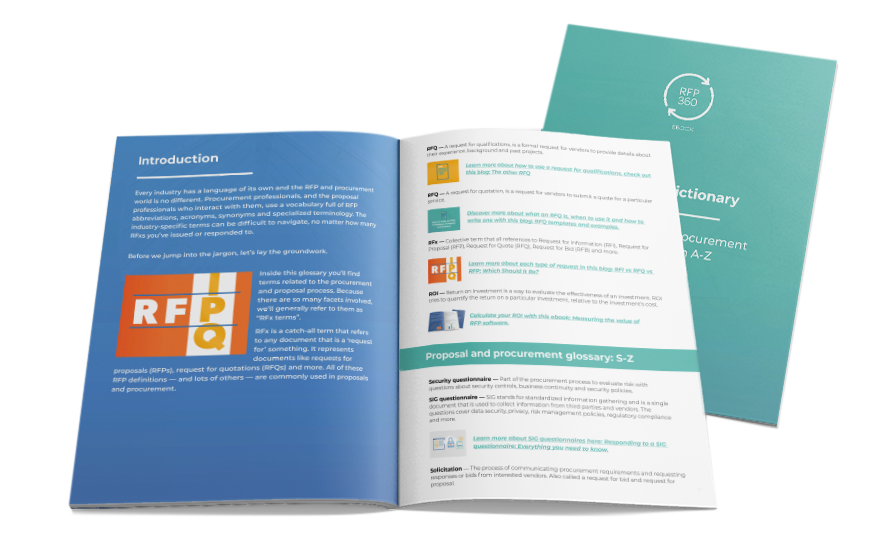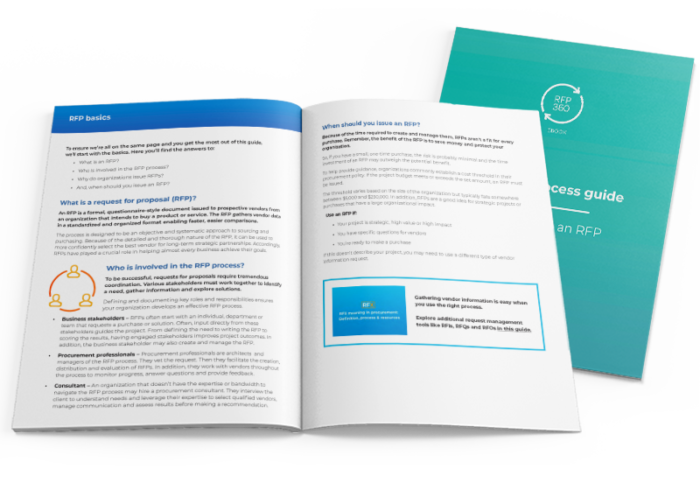Someone in your organization needs to make a purchase. Ideally, the stakeholder checks the procurement policy for instructions and proceeds accordingly. Depending on the scope of the project, the next step is often to share key information with a procurement manager. But what’s the best way to do that? For many organizations, a procurement request form is the answer.
In this guide, we’ll explore how to create and use a procurement request. First, we’ll start with some background information including what a procurement request is, who uses it and why. Next, we’ll share tips and best practices for using a request form in your procurement process. Finally, we’ll provide helpful templates and examples so you can see it in action.
Procurement request basics
What is a procurement request?
A procurement request is a form used to gather information from stakeholders to initiate the purchase of a good or service. Generally, the submission of the form is the first step in the requirements discovery phase of the procurement lifecycle.
This form, used to collect preliminary purchase information from a stakeholder, goes by different names. For example, the document may also be called a purchase request (sometimes shortened to PR), requisition form or procurement intake form.
Procurement request vs. purchase request vs requisition request
Some businesses define each of these documents differently and use a combination of them depending on the business need. Generally, the distinction between terms has to do with the type of procurement project they apply to.
Procurement request
The term procurement request or procurement intake usually refers to a project that is high-value, strategic or high risk. This form is more likely to be used to manage intake for indirect spend and kicks off a competitive bidding process like a request for proposal (RFP).
Purchase request
On the other hand, a purchase request is used for routine or low-cost purchases from a specific vendor. Take care not to confuse the internal purchase request form with an external purchase order, which is the documentation you send to a vendor to prompt a transaction.
Requisition request
Finally, a requisition request or form is usually submitted to obtain supplies, materials or goods when a contract is already in place and vetting a new vendor isn’t necessary. Additionally, requisition forms may be used to request distribution of items that are already in the organization’s inventory.
Regardless of the situation, all of these forms serve the same purpose — to quickly gather and organize stakeholder requests for materials or services. However, if your business uses more than one of these intake forms, be sure your procurement policy outlines the use case and process for each.

Who uses procurement requests
Procurement requests are common in public procurement. Because government agencies must provide transparency and accountability to the public, there are very clear steps to the procurement process. Often, that includes a procurement intake form.
In large organizations, procurement and purchase request forms help lean procurement teams quickly review and vet stakeholder needs. At the same time, they enable stakeholders to initiate the first steps of a new procurement project through a self-service process.
In smaller organizations, a procurement form may serve as a due diligence exercise. Indeed, the form helps ensure that stakeholders who manage their own budgets take the time to make thoughtful purchasing decisions and get approvals from the right people.
Benefits of using a procurement request process
Admittedly, the procurement process uses a lot of forms. That’s because procurement managers need to gather a tremendous amount of data to make strategic decisions, reduce costs and manage risk. When dealing with that much information, standardizing it just makes good sense. Additionally, using a formalized purchase request form has other advantages.
Time savings
Without a procurement intake form, requests from stakeholders likely end up in someone’s inbox. Naturally there are follow-up questions and a lengthy back and forth ensues. Using a procurement request form means you have all the preliminary information at your fingertips, letting you evaluate the need and determine next steps in less time.
Prioritization
With an overview of each procurement request, you can quickly prioritize the most important, complex and valuable work. Consequently, when low-risk requests come in, you can empower the stakeholder with self-service resources, freeing you up for more strategic work.
Auditability
Anytime you’re making spend decisions, it’s wise to document the process. While transparency is required by law in public procurement, it’s also valuable to private organizations.
Consistency
When you gather the same data for each request, you’ll have a better picture of what kinds of purchases are being made and why. Then, you can use that information to adjust your process to better serve your stakeholder and improve your procurement KPIs.
Stakeholder engagement
The clearer and easier you make the procurement process, including the procurement intake form, the less likely it is that stakeholders will make purchases outside of your purview. Not only is that good for you to reduce maverick spend, but it’s good for them as they’ll have access to your valuable procurement skills. In the end, they get a better deal and more favorable terms while you maximize vendor value and mitigate risk.
Common procurement request forms by type
Government, enterprise and large organizations often find it helpful to have more than one type of procurement request form customized by need and required information. Here are some of the most common types:
- Emergency procurement request form
- Competitive procurement request form
- Noncompetitive purchase request
- Planned purchase request
- IT purchase request
- Online purchase request
Tips for creating and using a procurement request form
Customize it
Just like with any form in your procurement tool kit, starting your procurement request form from an existing template or example is a great way to save time. However, you must customize it. As you create your form, keep your goal in mind. What information do you need to determine next steps?
Include the right sections
When creating your request, you’ll need to decide what sections to include. Remember, you want to keep it as short as possible to make it easy for the stakeholder and the reviewer.
Common sections to include:
- Stakeholder information
- Project summary
- Goals of the purchase
- Itemized list of goods or services
- Prospective vendor information
- Cost estimates
Add instructions
Once you’ve customized your form, review it again. Can your stakeholders easily navigate the form? Will they understand what each section is asking? If not, consider including instructions in the form and a glossary with definitions of helpful terms. In addition, it’s a good idea to ask a colleague outside of procurement to provide feedback.
Share your process
Stakeholders who submit a procurement request have a need and they’re reaching out to get help. So, it’s important to set expectations. What will happen next? When can they expect to hear back from you? Include an overview of your procurement timeline in your form so they understand the process.
Stay in touch
When you consider the procurement process from a stakeholder’s perspective, it often feels like a lot of waiting. Accordingly, it is helpful to establish touchpoints to proactively share where the request is in the process. Create message templates for these updates to save time.
For example, you may send a note to:
- Acknowledge the receipt of the request
- Provide a contact once a procurement manager has been assigned
- Notify the stakeholder that the request is pending approval
- Share the outcome or next steps
Procurement request examples
Ready to get started? Or just want to see a few examples of how other organizations manage procurement intake? While there’s lots of variation, each sample procurement request template does a great job of getting the required information quickly. Explore the options and consider how they might work for your organization.
- Competitive procurement form – Mississippi Department of IT Services
- Simple online purchase request (Word) – Vanderbilt
- Procurement forms list – UC Berkeley
- Emergency procurement notification form (Word) – Virginia IT Agency
- Procurement request form example – State of New Jersey
- Digital procurement request form – Agrilife
- Technology or software purchase request – Wisconsin Rapids Public Schools
Ideally, every organization’s procurement process grows and evolves to meet their needs. So, if you find your team is overwhelmed by scattered requests, it may be time to create your own procurement request process to help streamline intake.
To explore how RFP software helps improve efficiency through every stage of the procurement process, including intake and discovery, download the RFP process guide ebook.

